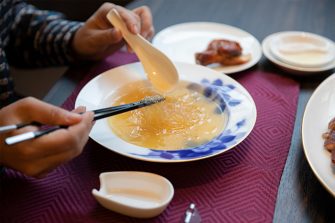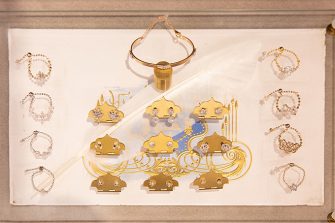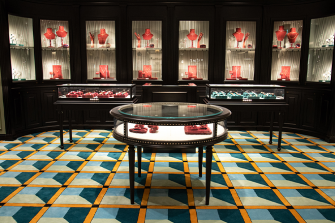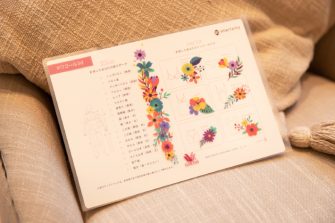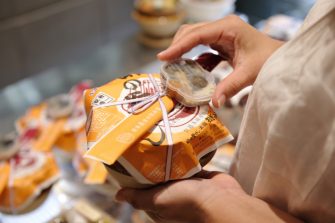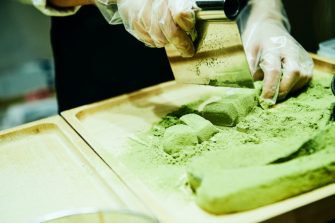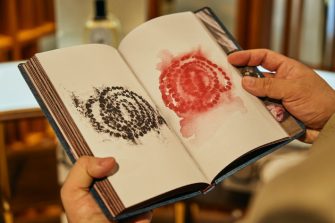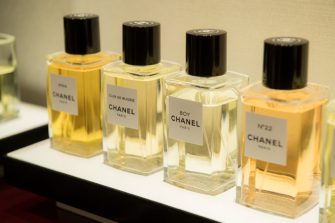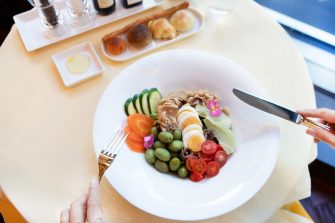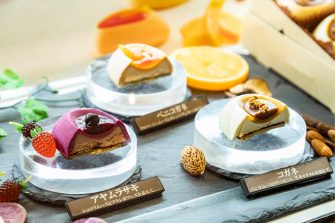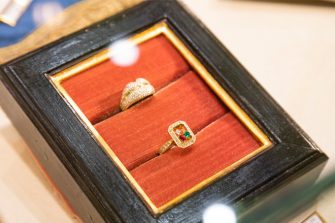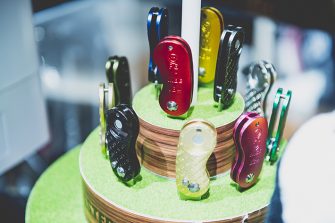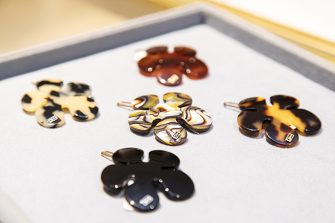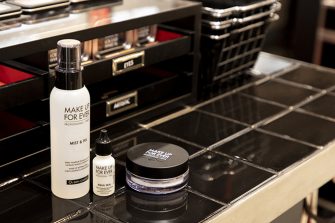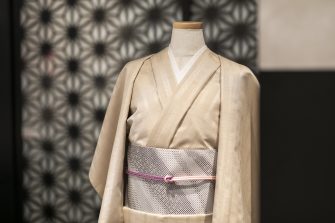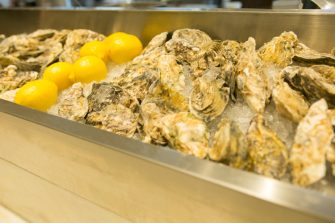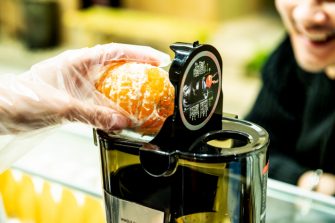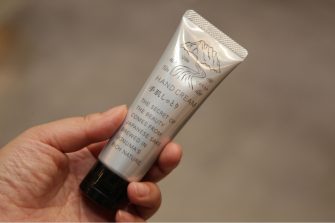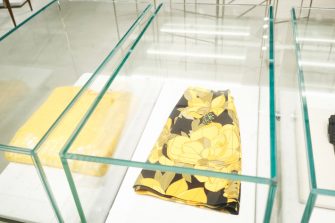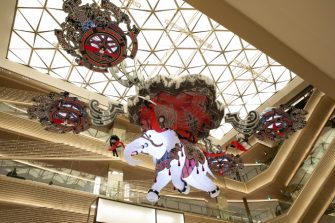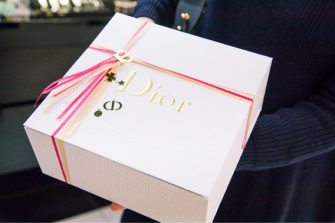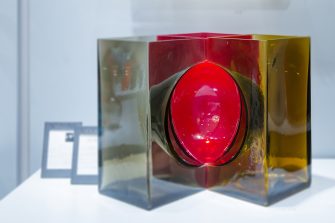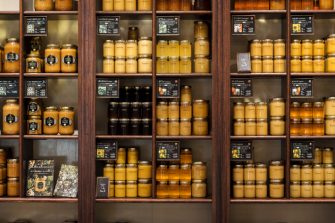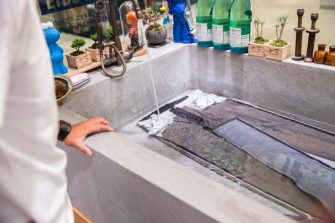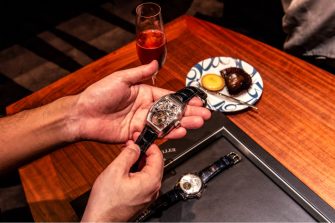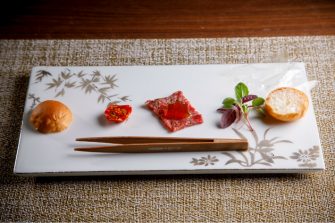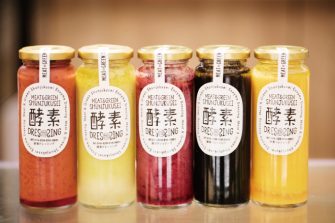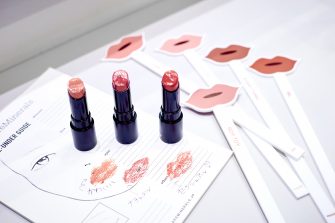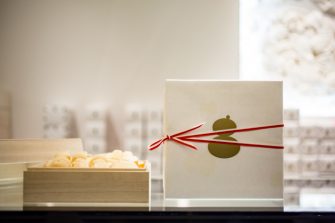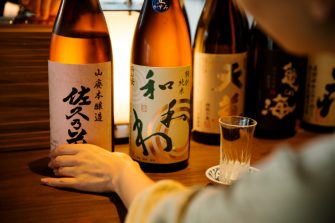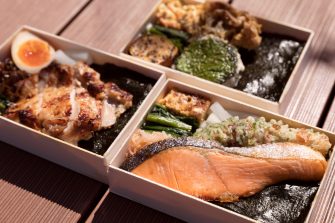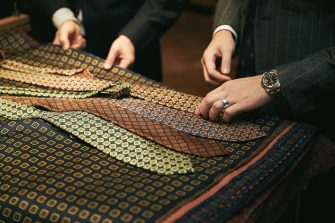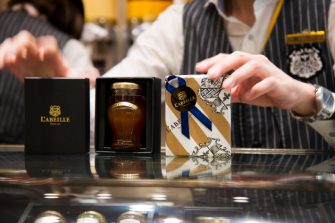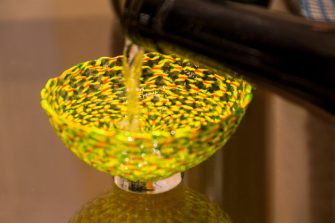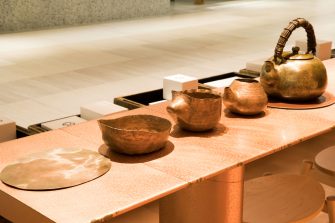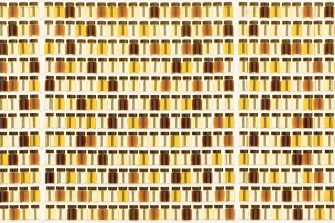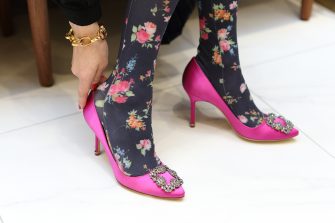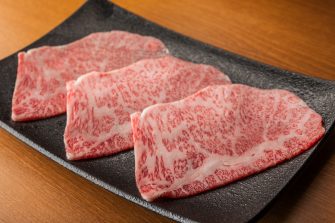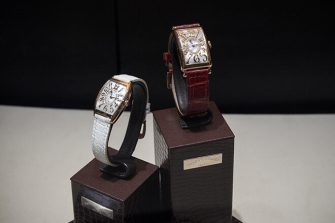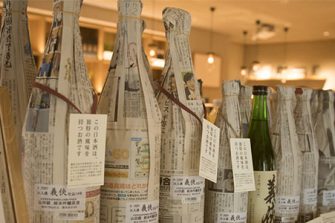

GINZA SIX EDITORS
时尚、珠宝&手表、生活方式、美容、食品…
精通各种类型的个性丰富的编辑们,在GINZA SIX上闲逛
记述走路发现的乐趣。
新常规与银座 Ginza and the New Normal
田岛朗
GINZA SIX EDITORS Vol.100
去银座已经23年了。话虽如此,(Magazine House)是在堀川的对面,过了三原桥的木挽町。对于45岁的我来说,第23年的银座,也就是说,年龄的一半都会去这条街,总觉得总觉得有点“银座对我来说是有缘的城市”,但可能还是早。在Magazine House中,《Hanako》是一本与银座这条街有着密切关系的杂志,32年间实际上已经制作了近80次的银座特集。月刊化的现在也是每年2次。所以调动到Hanako,能和银座的街道上的人们相识,也参加了祭典。是啊,果然还是能大声点说“银座是我的城市”吗,啊,但是还不能说。银座是一个特别、特别的城市。
这次,接受这次采访的时候,我想去的是3家新开店。在银座的一等地开店真的很特别。但是,他们心中描绘的银座的样子在日冕灾祸的现在,也许这里没有。也许相当不安。哎,银座没问题吧,大家应该都这么想。正因为如此,作为在银座工作,一直在介绍银座工作的银座魅力的编辑,一定要和这三家人见面,愉快地聊天。
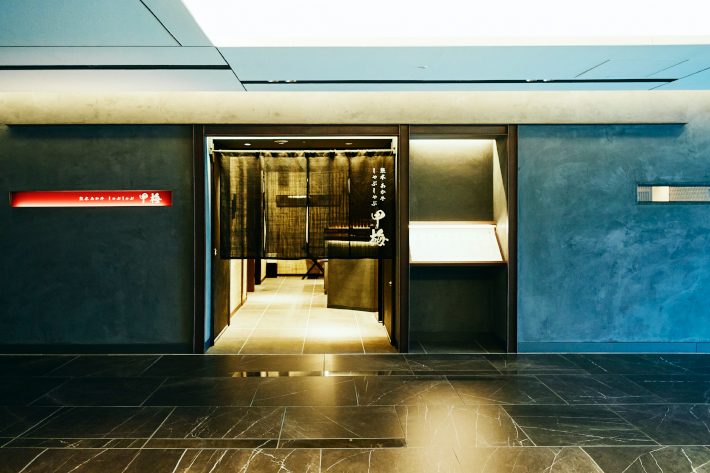
前往第1家的是13F的“熊本红牛涮锅甲梅”。“GINZA SIX的远离”13F是一家汇集了很多漂亮店的楼层。这里可以用阿苏生长的红牛“甲诚牛”吃火锅。阿苏是日本最喜欢的地方。因为能在银座享受在那雄伟的大自然中成长的红牛,所以备受期待。
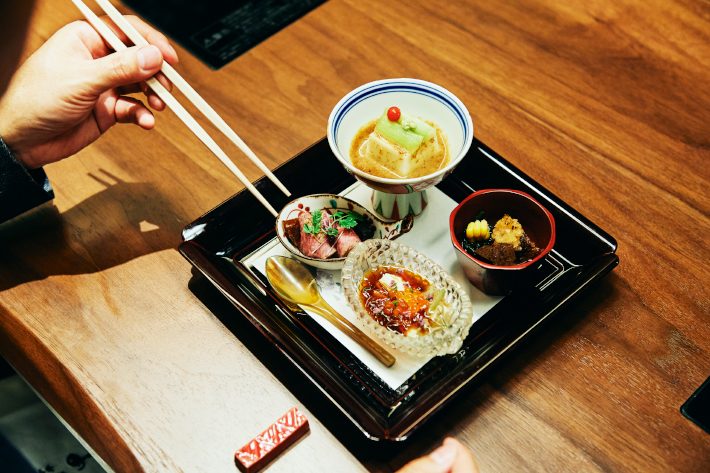
今天吃的是“凛”套餐(18000日元※以下全部不含税价格)。首先出来的是前菜四种。从左上角顺时针方向,煮牛蒡、红牛、蛤蜊汤叶、红牛的低温烹饪。
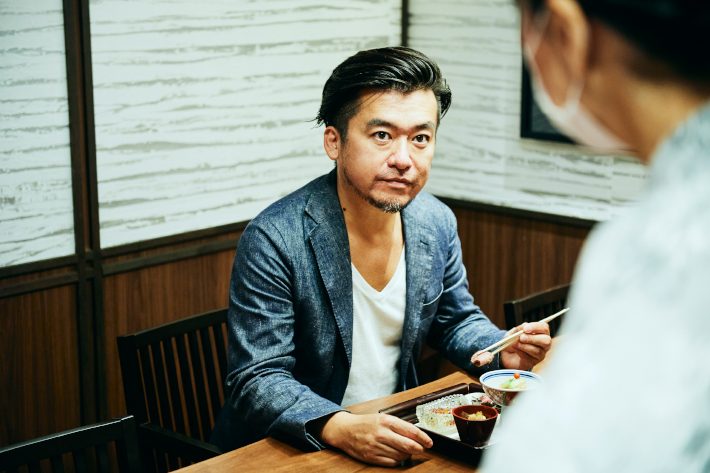
其中佐贺的乡土美食,味道浓厚。豆浆和吉野的本葛混合而成的自制豆腐。“搅拌起来很麻烦。”女老板上田说。

接着出现的肉寿司,每次使用的部位都会发生变化,这次是扎布顿。喜欢用麦芽糖的盐和炙烤海胆做成粉末的。不愧是13F!
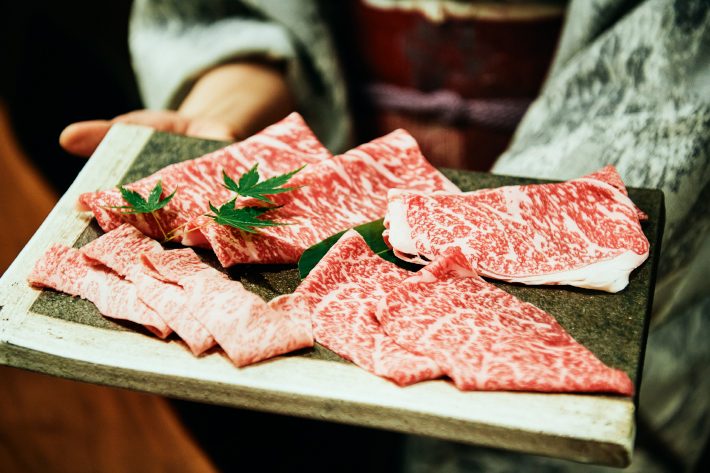
接下来,涮锅终于登场了。今天的套餐有三角玫瑰、汤、特上排骨、扎布顿、肋骨、牛腰肉、牛腰肉、无花果和紫罗兰。肉在点菜后会切片。
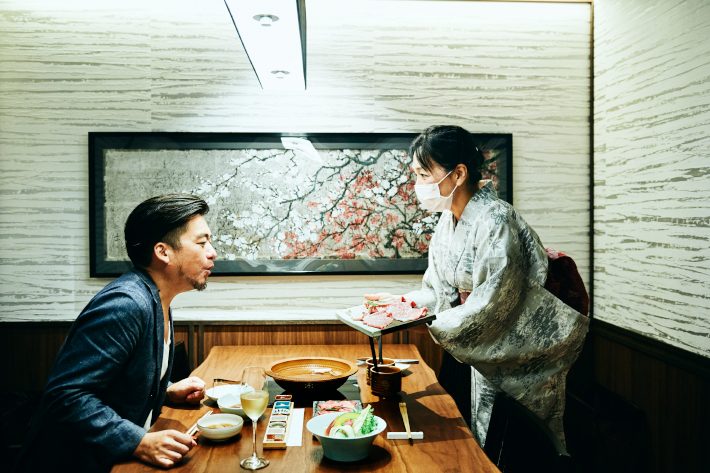
在肉面前为什么会呛人呢?以前,在《BRUTUS》在籍的时候做肉特集的时候,写过“好吃的肉是社交”的标题。肉的周围人聚集在一起。(现在回想起来有点羞耻)。应该和老板娘说话。我喜欢肉啊,是啊。
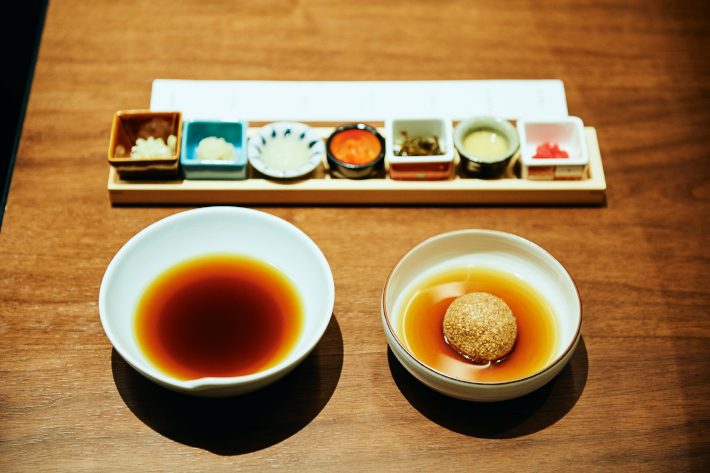
然后隐藏什么呢(虽然没有隐瞒)我是骗人原理主义。对芝麻酱实在太吵了。老实说,比起肉,芝麻酱更让人在意。但是,看到追出来的芝麻酱让人大吃一惊。这是怎么回事?耀眼的芝麻酱!

将出现团子状的自家制的芝麻,按照自己的喜好来捣碎,制作出自己的芝麻酱。即便如此,风味十足的绝妙之处…。只有这个芝麻下酒菜才能喝日本酒。请让我做。
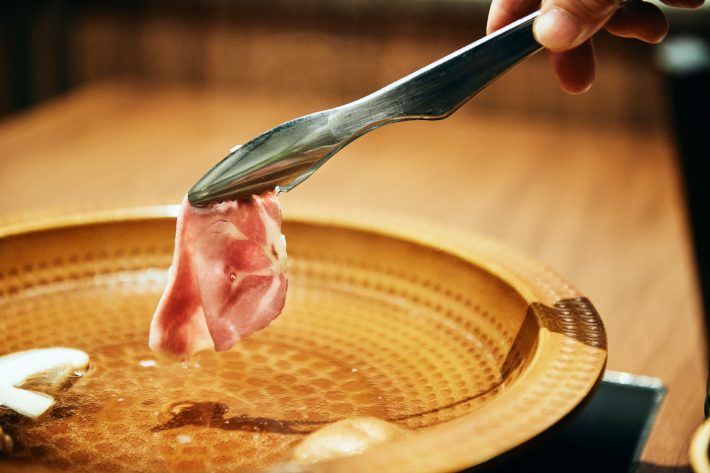
在利尻产的海带汤里加入德岛的“香菇武士”,味道更浓郁的火锅,用小火慢慢涮锅。使之沸腾是不可避免的,美味就会消失。涮锅涮锅。悠闲、悠闲、悠闲。
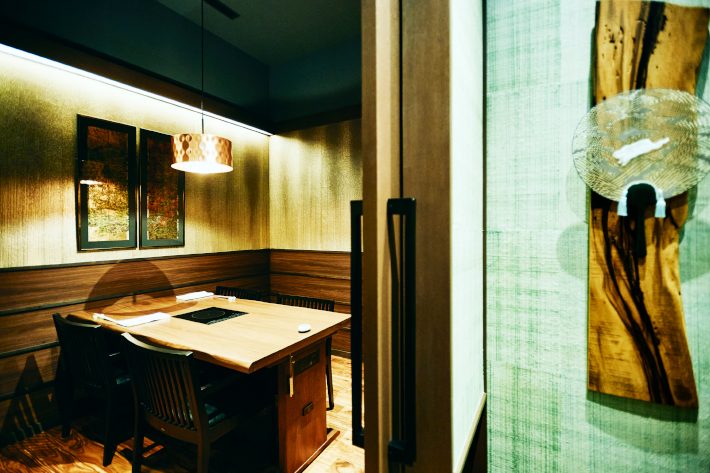
阿苏说到银座的故事。老板娘的话也很开心,完全沉稳了下来。因为是这样的情况,如果有像这次这样使用方便的单间的话,可以和附近的人悠闲地吃饭,所以选择的范围也会扩大。约定下次私下来,然后去地下。
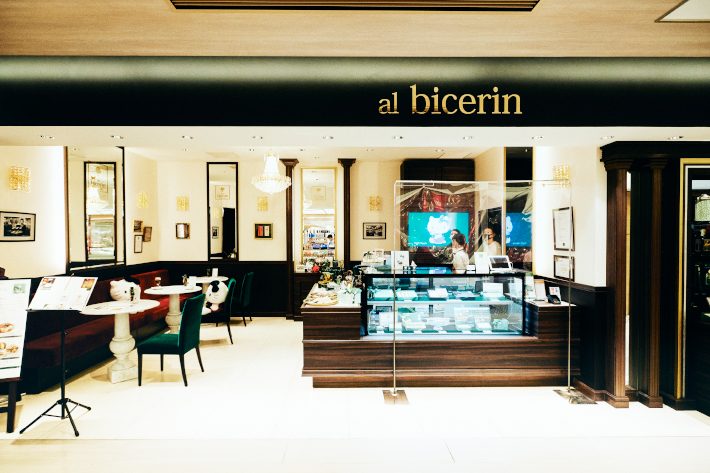
在B2F下车后顺路去的是意大利都灵最古老的咖啡店“Bicerin”。这是1763年创业的传说中的咖啡店。说起意大利的老字号咖啡馆,米兰的1817年创立的“Cafcoova Milano”也很有名,但实际上这两家都是GINZA SIX,所以很害怕。银布也在这儿极为罕见吗?
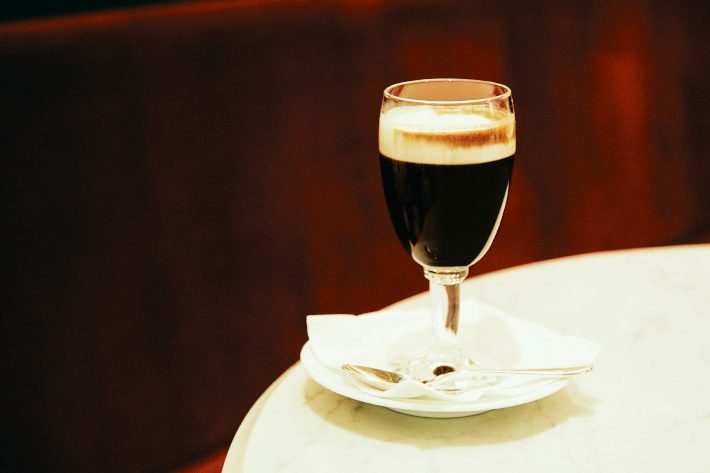
以售后涮锅的杜松子酒的心情,点了浓缩饮料的比切林(1000日元)。在都灵方言中表示“小玻璃杯”的巧克力饮料,不破坏热巧克力、浓咖啡、鲜奶油的美丽层层,直接倾斜饮用。食谱和温度都很严格,海明威也很喜欢。说点题外话,海明威和池波正太郎、伊丹十三里面对于大多数男性编辑来说都是关键词。fufu。
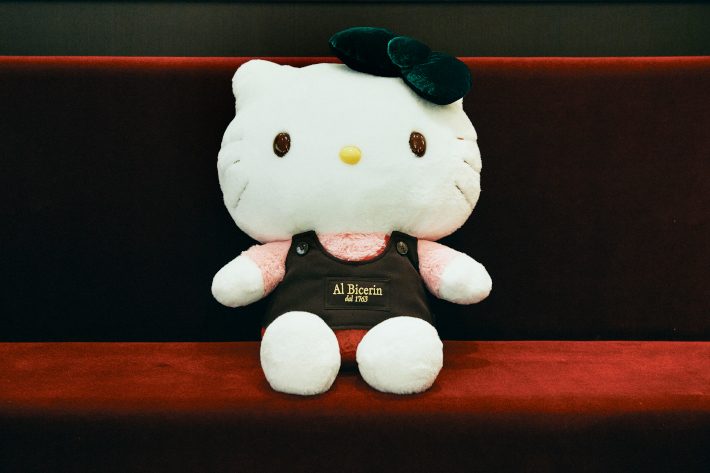
一个人不搅拌比切林,一个人嗜好的时候,突然发现Kitty坐在旁边。狗,Kitty? 为什么???
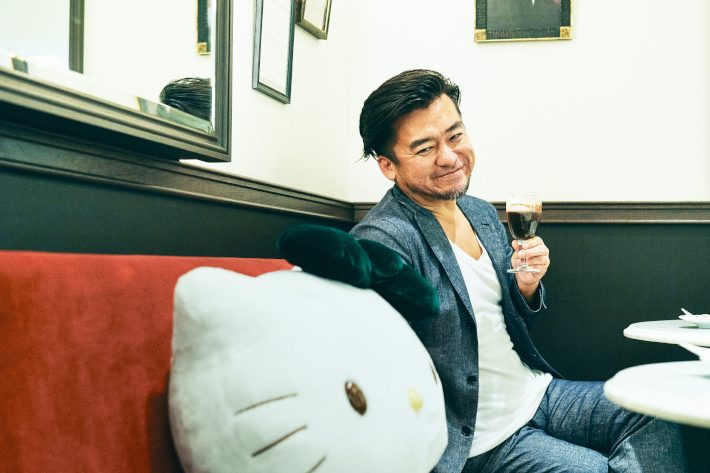
其实这个Kitty,去都灵的时候被比切林的美味所感动,现在正在修行中。而且为了协助店内的社交迪斯丁,坐在正中间的座位上。和Kitty是同龄,所以有亲近感。从男性杂志的心情到女性杂志的感觉完全倒退。Kitty酱,这次尝尝合作菜单吧!
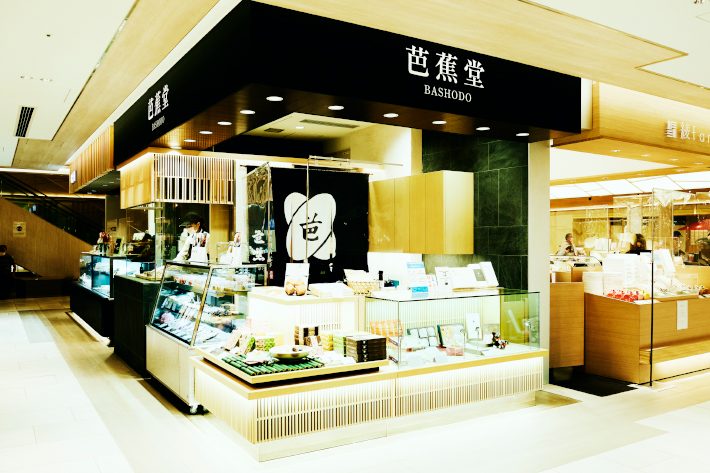
转眼间差不多该回到编辑部的时间了,为了给部员们买回特产,还是去拜访了B2F的“芭蕉堂”。这是1868年,也就是1868年创立的。作为年糕店长期持续做生意,大约80年前开始致力于蕨菜饼的制造。
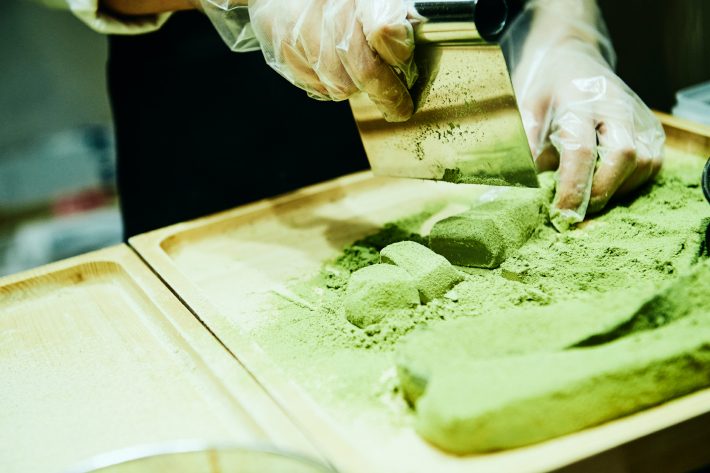
店的角落里有现场贩卖的空间。听说,现在的社长从北海道到冲绳在全国各地的百货店举办了活动,在这次现场销售中博得了很高的人气。噗哧的蕨菜饼和抹茶。…然后马上剪掉。不,ASMR来说不是吗?但是总之,切掉蕨菜饼时的那种感觉,让人心情舒畅的感觉!
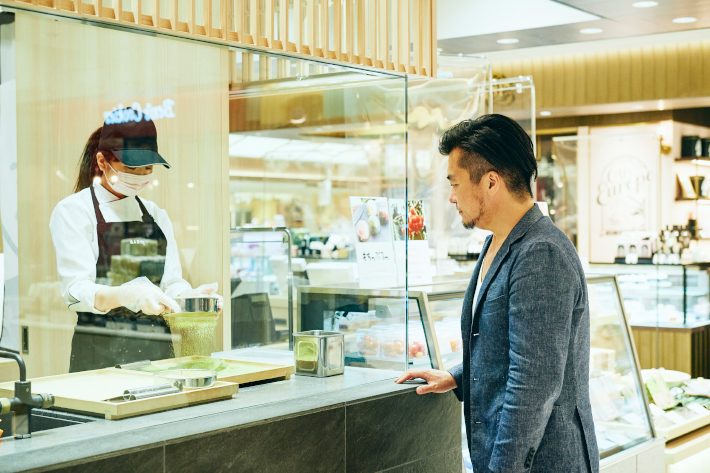
…注意到的时候不由自主地戴着头望着。店员,对不起。如果听到噗哧的秘密,就用很难处理的铜锅直接用火煮做,总之希望大家能吃到刚煮好的柔软状态。

看着橱窗的话也会有这样的商品。用蕨菜饼做的噗噗哧噗和噗哧不一样吧。日语深奥)除了用皮馅和白馅之外,还包着焙茶拿铁馅和芒果馅等的“蕨菜饼馒头”(1个232日元~)。女性部员们好像很受欢迎,这边也和蕨菜饼一起吃。

寸外(写在白板上,年轻的工作人员告诉我这是什么意思。大概是叔叔用语吧)虽然是特产,但还是买了很多。啊,蕨菜饼是饮料,年轻人啊。3点的零食时间能赶上吗?
尽管如此,因为是每天都去的街道,所以还记得GINZA SIX建成时的冲击。我个人认为,外观是纪念碑上象征性的建筑物在银座只有和光,在知道“银座规则”的同时,作为闪闪发光的新卡默出现了GINZA SIX。1F部分有银座特色的路面店的连续性,能感受到楼层内部通道凹凸不平的胡同的部分,尊重银座,更新银座更新银座到现在为止这条街上没有的存在感的方法,啊,这是为了长期留在银座而建造的我觉得。我成为爷爷的时候,对于年轻人来说,和光和GINZA SIX都是平坦的,银座自古以来就有的帅气建筑物的时代,一定会变成这样吧。希望成为那样。
在银座的街道上,人们已经减少了很久了。新正常是什么?无论是商业设施还是杂志,都不急需地说就是这样。无情的工作。但是,新常规却不断被覆盖。因为我们的人生绝对需要娱乐,所以只能相信这一点,一边仔细阅读看不见未来的时代风,一边慢慢向前迈进。
然后,我从心底支持在这个时机来到GINZA SIX的这三家公司。大城市的魅力下降,地方的魅力也会提高,虽然也听到了这样的话,但是我觉得银座的魅力不会下降。这并不是因为银座只是大城市才有魅力,而是因为它是一个很少而有魅力的,而是一个能看到经营店铺的人们的脸的稀有街道。我想吃那个菜,想置身于那个空间,想看那个人的脸。不仅仅是贪婪地享受消费,还想度过丰富心灵的时光,所以我们置身于街上。银座就是这样的街道,希望GINZA SIX今后也能继续这样下去。
Text: Ro Tajima Photos: Yuichi Sugita Edit: Yuka Okada(81)
©1976, 2020 SANRIO CO., LTD. APPROVAL NO. L611995
I’ve been commuting to Ginza for 23 years. Well, not precisely Ginza: Magazine House is in the Kobikicho district, across Mihara Bridge, under which the now-buried Sanjikken canal once flowed. I’m 45 now. This is my 23rd year in Ginza, which means I’ve been coming to the district for half my life. I’m finally starting to feel I may have a special connection to Ginza, though perhaps it remains presumptuously soon to say such a thing. Within Magazine House, Hanako has even deeper ties to Ginza, having run nearly 80 features on the district in the course of its 32 years. Since becoming a monthly, Hanako still features Ginza twice a year. So, ever since my transfer to Hanako, I’ve had the opportunity to get to know numerous Ginza locals. I’ve even participated in community festivals. Perhaps I’m entitled to say, with more decision in my voice, “Ginza is my town!” Or maybe not quite yet. I believe Ginza is just that special a place.
On taking this assignment, I said I wanted to go to three establishments that opened recently. Opening a store or restaurant in prime Ginza real estate is something special. Nevertheless, in the coronavirus age, is the picture of Ginza the owners of these three establishments once had in their minds still true? They themselves may be wondering if Ginza is OK. And that’s why, as an editor who works in and regularly features Ginza, I wanted to meet and talk to people from these three new places.

I went first to Kumamoto Akaushi Shabu-Shabu Koubai on the 13th floor. The 13th floor is a GINZA SIX hideaway filled with great establishments. Here you can enjoy shabu-shabu with Akaushi Kouseigyu beef from Aso, one of my favorite places in Japan. Akaushi beef from cattle raised in a magnificent natural setting—I’m getting pretty excited.

Today I’ll have the Rin course (18,000 yen; all prices listed before tax). First up are four appetizers: clockwise from top left, godofu, stewed Akaushi beef, taguri yuba, and Akaushi beef cooked at low temperature.

The local Saga godofu in particular, homemade tofu made by kneading soy milk and hon-kudzu from Yoshino, is especially savory. “The kneading process takes quite a bit of work,” Ms Ueda, the restaurant’s proprietress tells me.

Next is meat sushi. The cut served changes each time. This time it’s chuck flap. Add Maldon salt and powdered roasted sea urchin to taste. And it’s just as one would expect for the 13th floor!

And now, yes, the shabu-shabu has arrived. Today’s course is chuck short rib, tongue, ribeye lip, chuck flap, rib roast, sirloin, top sirloin cap, and top blade. The meat is sliced after you place your order.

Why am I grinning here? Way back when, when I was at BRUTUS, we did a meat feature with the title “Meet around Meat” (which sounds a bit embarrassing now), meaning that meat is social, that people congregate around it. My talk with Ms Ueda is warming up. “You look like you love meat.” “Don’t we both?”

I’m not trying to hide anything (and I’m not), but I’m a fundamentalist about sesame seed sauce. I make a pretty big fuss about it. To be honest, I’m often more interested in the sesame seed sauce than the meat. But, taking in the sauce that’s arrived, I’m amazed. This sauce! This glorious sesame seed sauce!

The restaurant’s own sesame paste is presented as something like a dumpling, to be broken apart as you wish, essentially allowing you to make your own sesame dipping sauce. The flavor is magnificent. The sesame paste alone could probably be paired with sake—altogether a course of action worth taking.

Shiitake samurai mushrooms from Tokushima further enrich the flavor of the Rishiri kombu dashi in the pot, wherein one slowly swishes the meat, shabu-shabu style, through the low temperature broth. This is because if the broth were brought to a boil, God forbid, the savor would simply take its leave. Swish-swish, shabu-shabu, swish-swish, shabu-shabu, slowly, leisurely, chill.

The talk turns to Aso, to Ginza. Ms Ueda is a pleasing conversationalist; I’m completely settled in now. Times being what they are, it’s nice to have the option of a private room into which one can settle, as I’ve done today, a place where one can come to have a leisurely dinner with a friend or close acquaintances. I promise to come again on my own time, then make my way belowground.

Now standing on the second belowground floor, I stop by Bicerin, named for the oldest café in Turin, Italy, a legend founded way back in 1763. The famous Café Cova Milano is another of Italy’s venerable cafés, this one founded in 1817 and located in Milan on the upscale Via Monte Napoleone shopping thoroughfare. Actually, they’re both here at GINZA SIX, so the one will have to pardon me for opting for the other. Not such a rare occurrence at GINZA SIX, I imagine.

I’m in a dolce mood after shabu-shabu and order the café’s signature bicerin (1,000 yen), a chocolate drink that means small glass in the Turin dialect. You drink it by tilting the glass to your mouth without disturbing the lovely layers of hot chocolate, espresso, and fresh cream. The recipe and temperature are rigorously controlled. Hemingway is said to have loved it. As an aside, I’d hazard that recommendations from Ernest Hemingway, Shotaro Ikenami, or Juzo Itami are clinchers for just about any male editor.

As I’m enjoying my bicerin alone, not stirring it with a certain panache, I suddenly notice Hello Kitty sitting next to me. What? Kitty? How?

Actually, Kitty was so moved by the taste of bicerin when she visited Turin, she’s now in training, I’m told. She’s sitting there in the middle between the seats to help in the café’s social distancing efforts. Compatriots of the same age, we share a sense of affinity. I’ve been wrapped up in men’s magazine mode for a bit, but now I’m back in Hanako lane. Well, Kitty, I think next time I’ll have something off a special Hello Kitty collaborative menu.

In no time at all the time has come to head back to the office. I’m thinking of buying our editorial staff a little souvenir, so I’m off to Bashodo, also located here on the second belowground floor. Founded back in 1868, it’s sold mochi rice cakes forever—it began making its trademark warabimochi some 80 years ago.

There’s a demonstration space in the corner of the store. When I inquire, I’m told the current president hosts events at department stores around the country, from Hokkaido to Okinawa, and that his sales demonstrations have become quite popular. The warabimochi of just this squishy-squishy consistency, the powdery matcha, and the cut, cut, cut, cutting. Actually, strictly speaking, in ASMR terms, it doesn’t sound like cut, cut, cut. But, at any rate, the sensation of warabimochi being cut is a thrill.

I find myself, without thinking, gazing, gazing, gazing from the front row. My apologies. I inquire into the secrets of the wondrous consistency. I’m told the warabimochi is prepared over direct heat in copper pots, which are somewhat difficult to handle, and that the proprietors are anxious that we enjoy the fresh warabimochi at its softest.

I look into the showcase and see these as well. These Warabimochi Manju (from 232 yen each), with fillings including smooth sweet bean paste (anko), white bean paste, roasted green tea latte-flavored bean paste and mango-flavored bean paste, surrounded by dough made from warabimochi that is jiggly-jiggly (differing from squishy-squishy, to be sure). I believe this is something the women editors at the office would like. I get some, along with the warabimochi.

I wrote on the whiteboard that I was going out a bit (the actual term I used puzzled some of the younger staff; it must be a middle-aged male thing), and I ended up buying all sorts of souvenirs and gifts. But, my dear younger colleagues, warabimochi is to be regarded as something like a drink! Hopefully I’ll make it back before our 3 o’clock break.
Since I’m in Ginza every day, I remember my shock when GINZA SIX was built. Until then, I’d seen Wako as the only iconic building in Ginza. Along comes GINZA SIX, a sparkling newcomer reflecting an understanding of traditional Ginza rules.
The first floor portion maintains continuity with the very Ginza-esque storefronts at street level, the indoor passageways zig and zag like the alleyways outside—a tribute to Ginza—while updating tradition with a presence the district lacked before. I get the sense it was built to last, to be a Ginza fixture for a very long time to come. When I’m an old man, the youngsters will likely look at Wako and look at GINZA SIX and see, on equal terms, two really cool Ginza buildings that have been around a long, long time. I certainly hope so.
There are fewer people in Ginza right now, and it’s been this way for some time now. Is this really the new normal? Both retail complexes and magazines, strictly speaking, are non-essential. But the new normal gets constantly overwritten. We need diversion and brightness in our lives to live. In these unpredictable times, we have no choice but to faithfully proceed, little by little, while keeping a hopeful eye on the latest developments.
In the middle of all this, from my depths, I want to cheer on and support the three establishments I visited today at GINZA SIX. Urban areas are becoming less attractive while rural areas grow more attractive—it’s something you hear all the time these days. But I feel Ginza’s charms will never fade. The appeal of Ginza doesn’t lie in its urban character. Rather, it’s that rare neighborhood, regardless of scope or scale, where one encounters shopkeepers, their bearing and conduct, as people, openly. I want to eat that food, I want to be in this space, I want to see that face. It’s not simply about lavishly enjoying consumption. We come for the richness of the time spent here. Ginza is a rare example of this kind of space. I hope it remains so for a long, long time to come.
Text: Ro Tajima Photos: Yuichi Sugita Edit: Yuka Okada(81)
©1976, 2020 SANRIO CO., LTD. APPROVAL NO. L611995
田岛朗
『Hanako』主编。1974年出生,1997年进入Magazine House。1998年被分配到《BRUTUS》编辑部,2010年担任副主编。2016年就任《Hanako》主编,进行了大更新。现在作为“实现职业女性‘更想知道的’的知识生活方式媒体”,不仅在杂志上,在数字活动、读者组织、商品开发等广泛的领域中展开了Hanako品牌。


